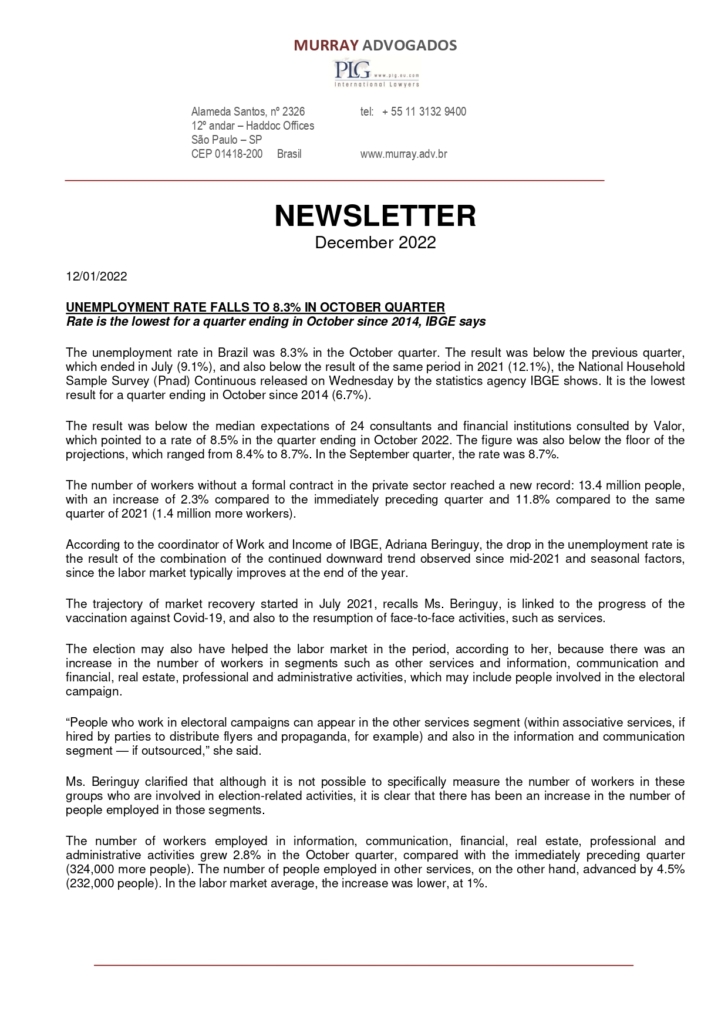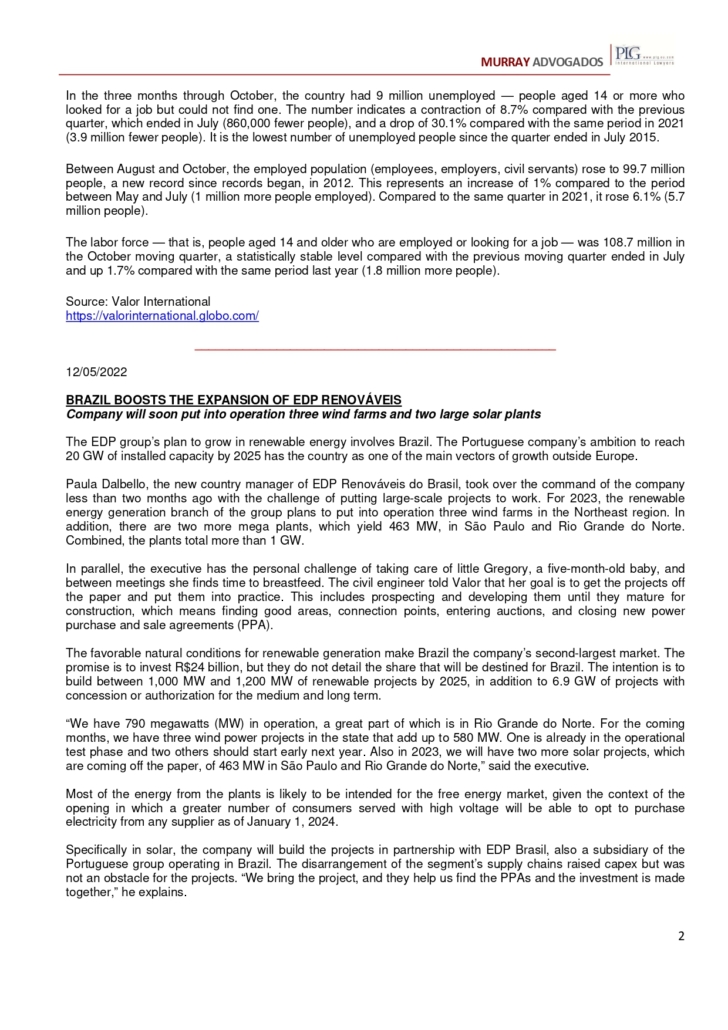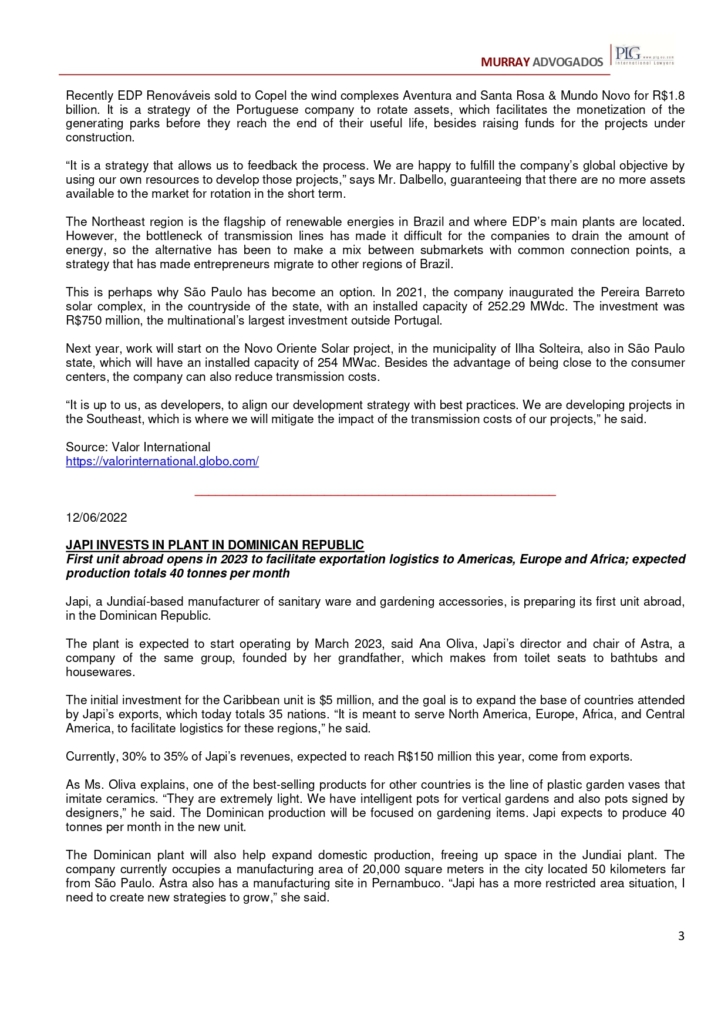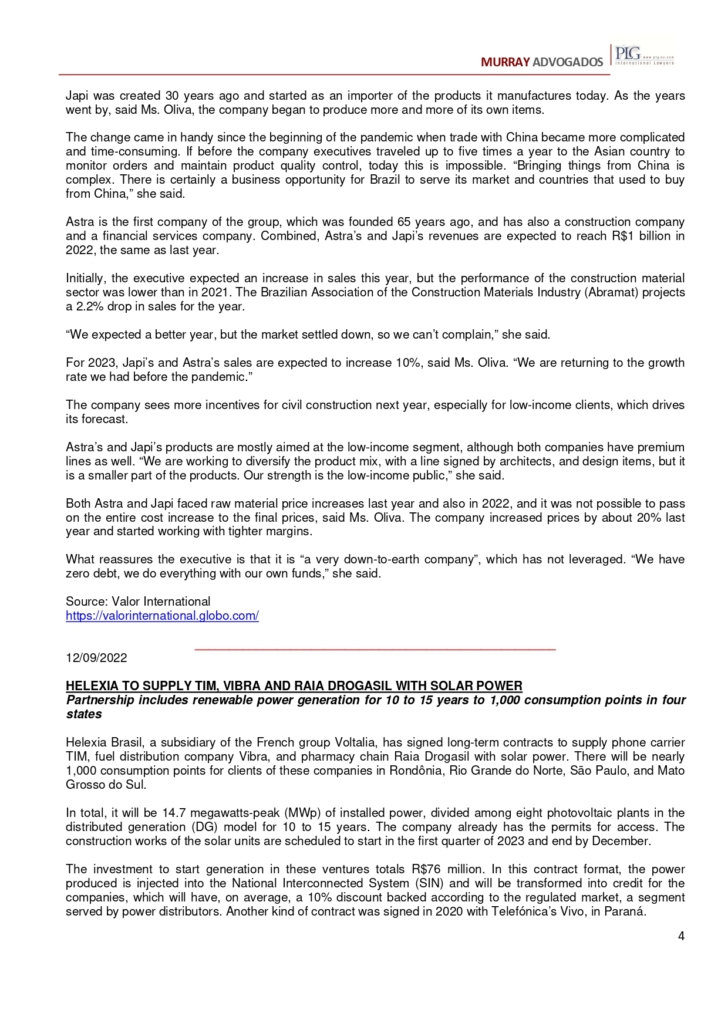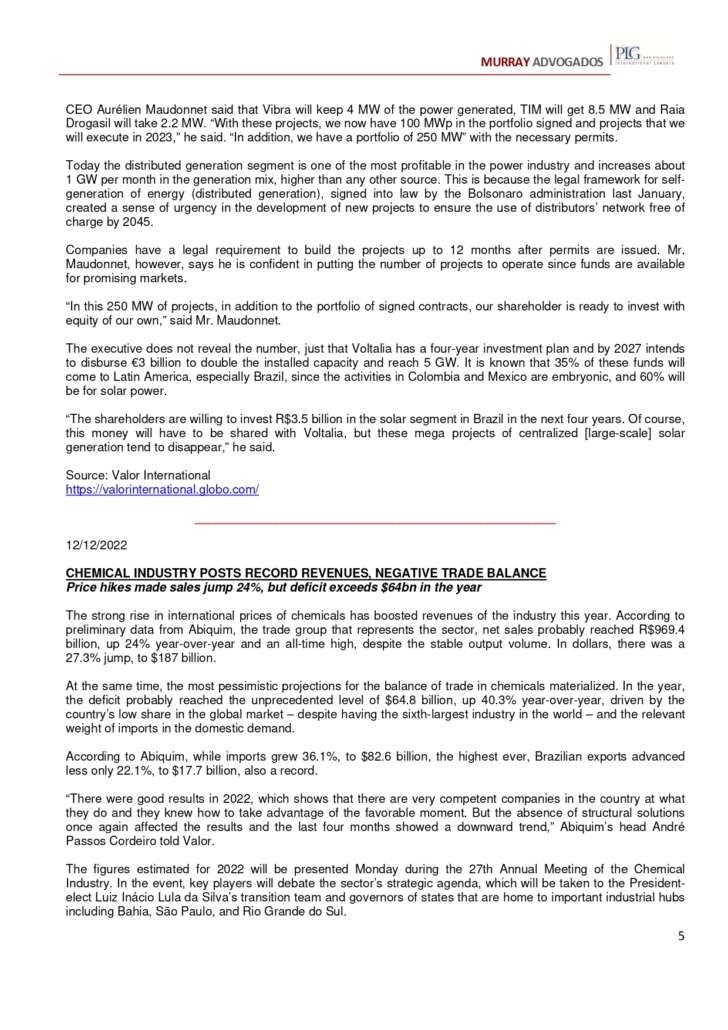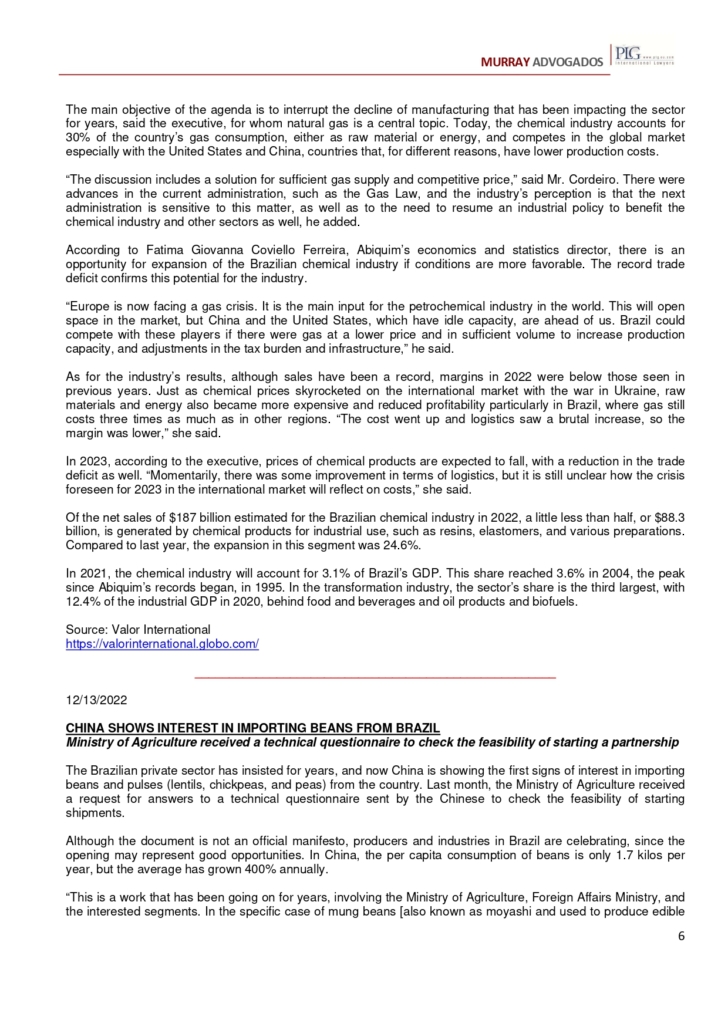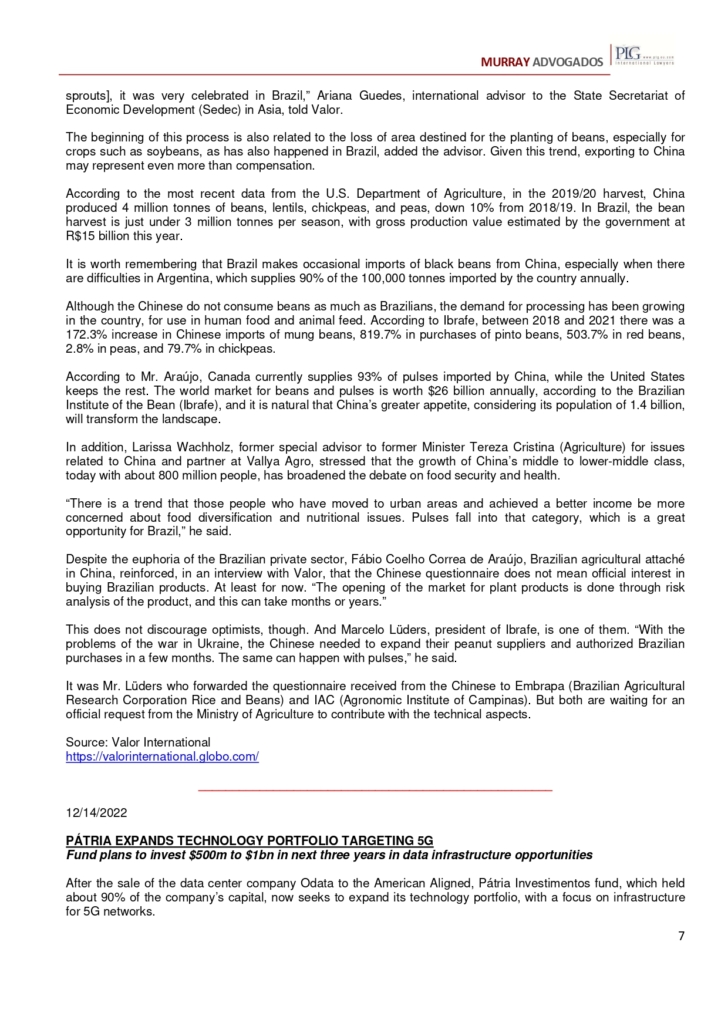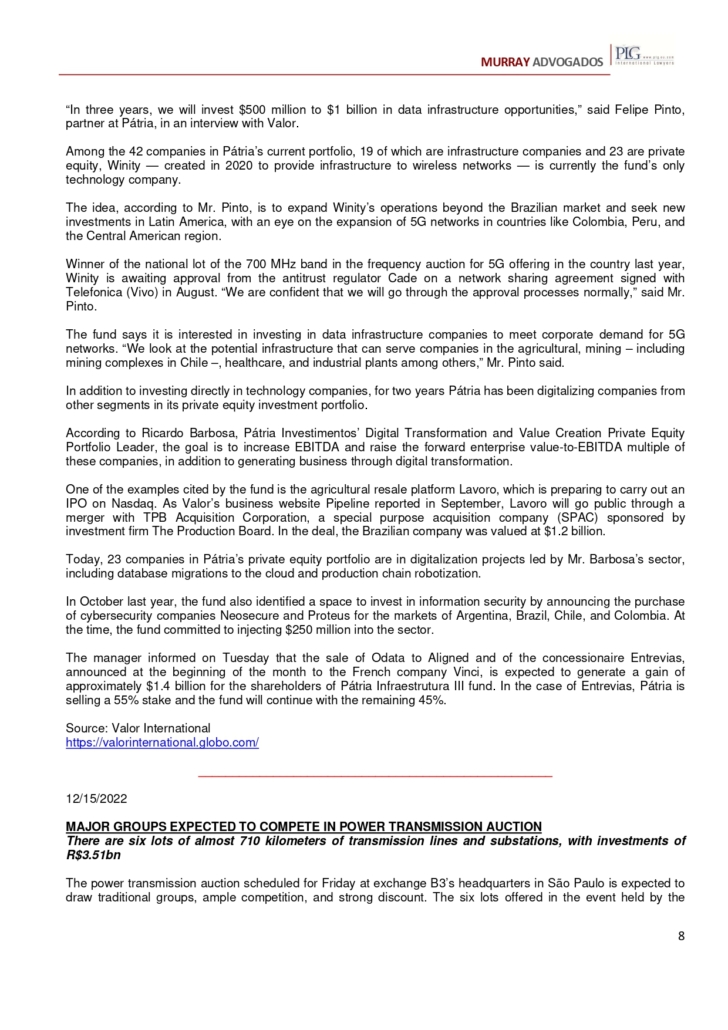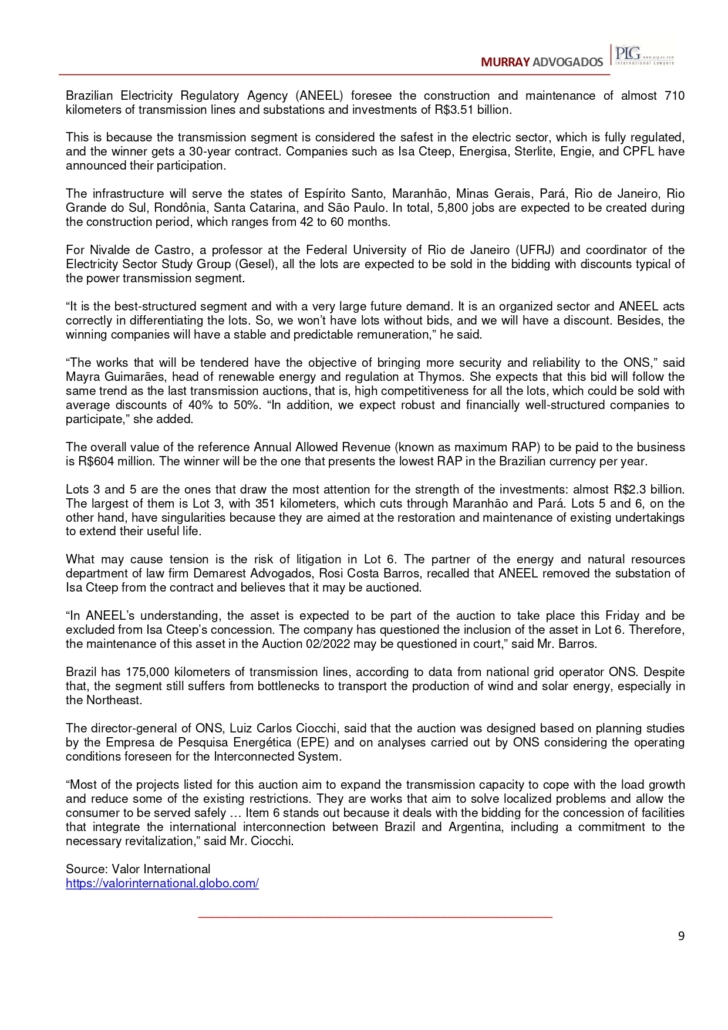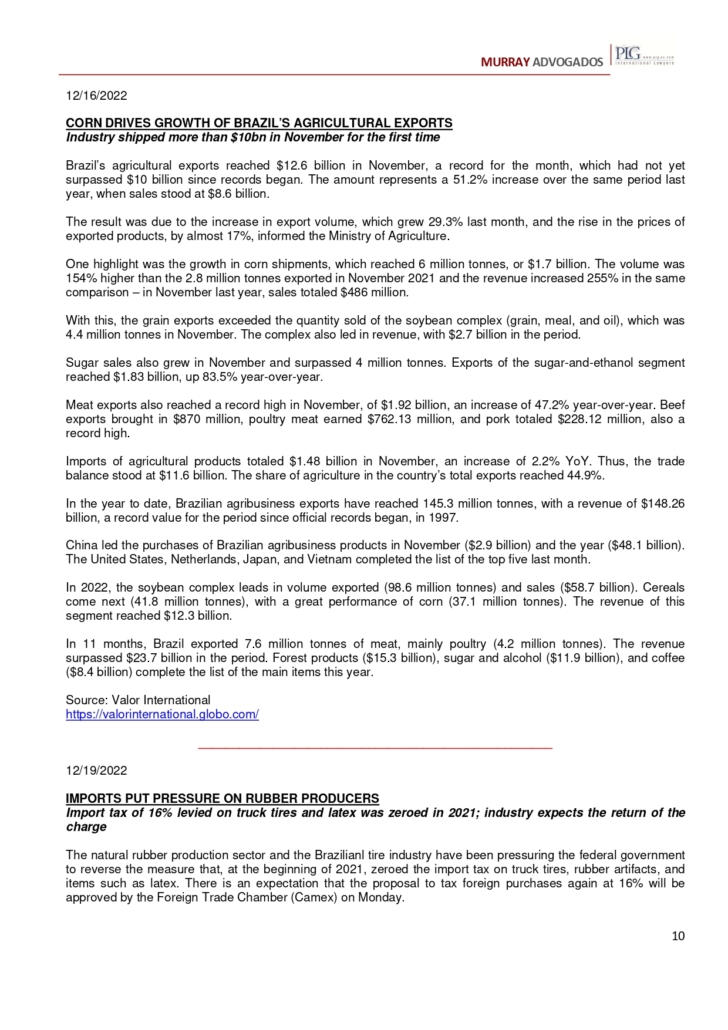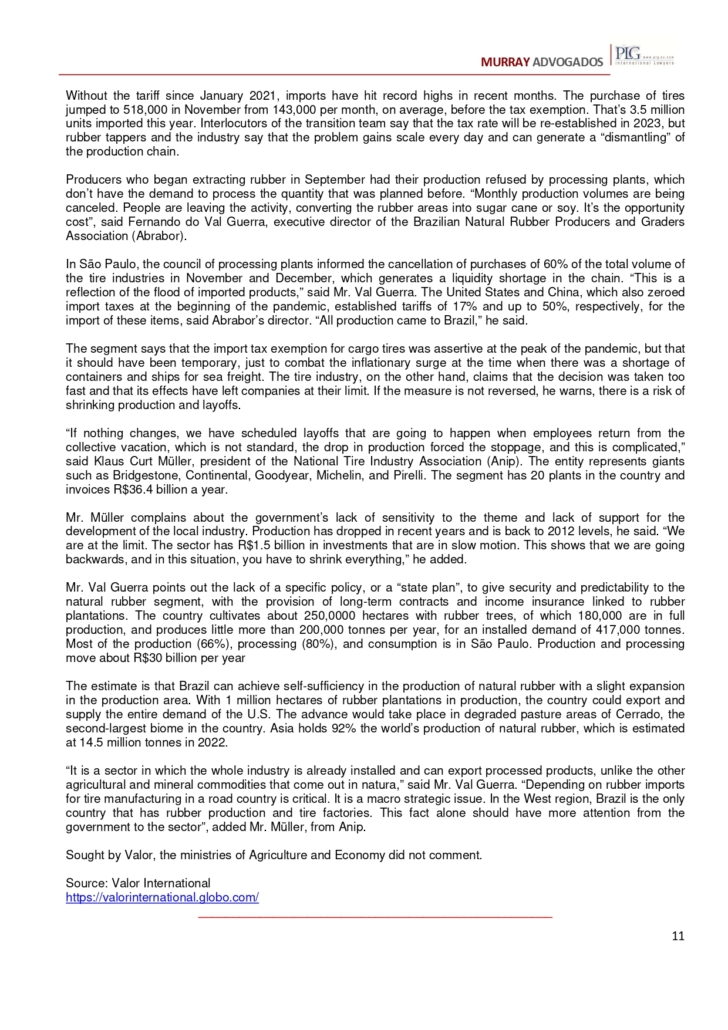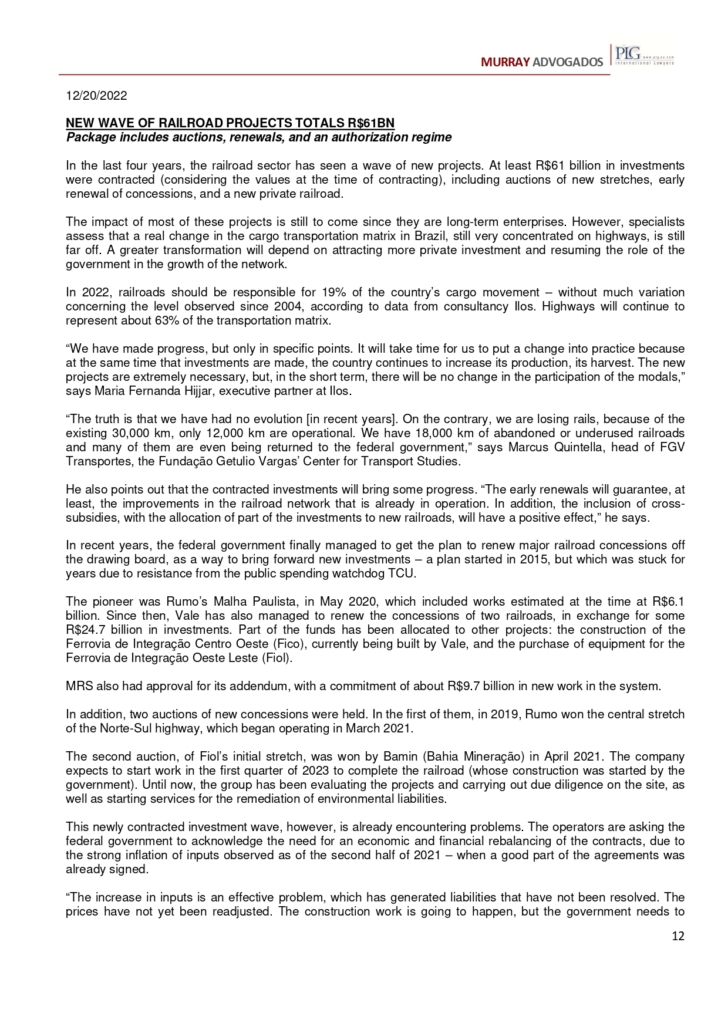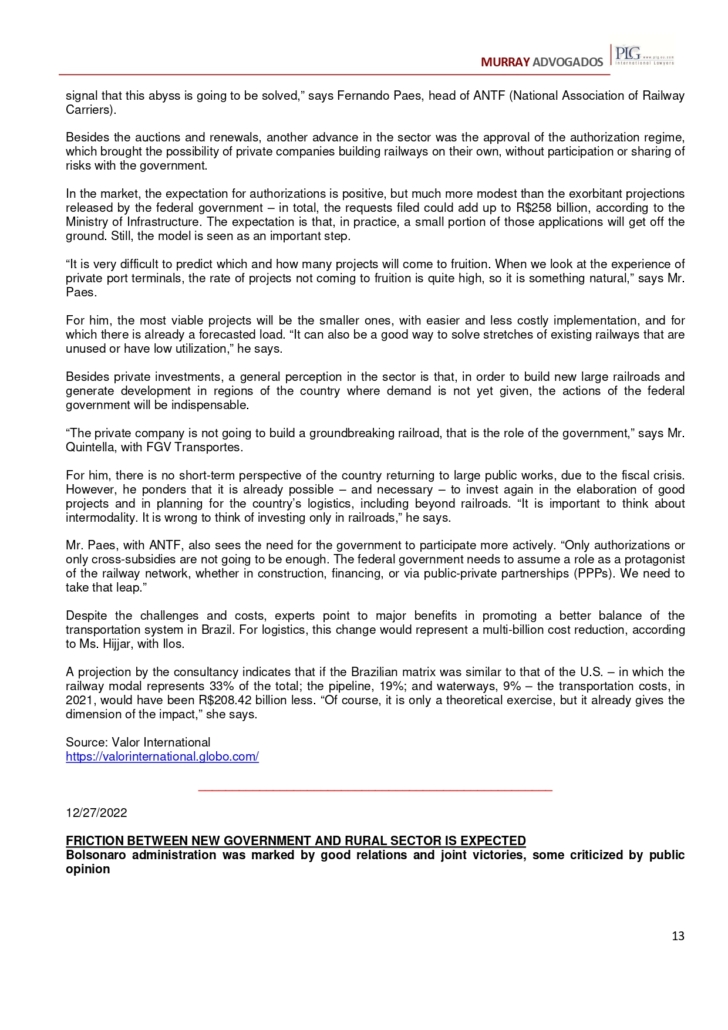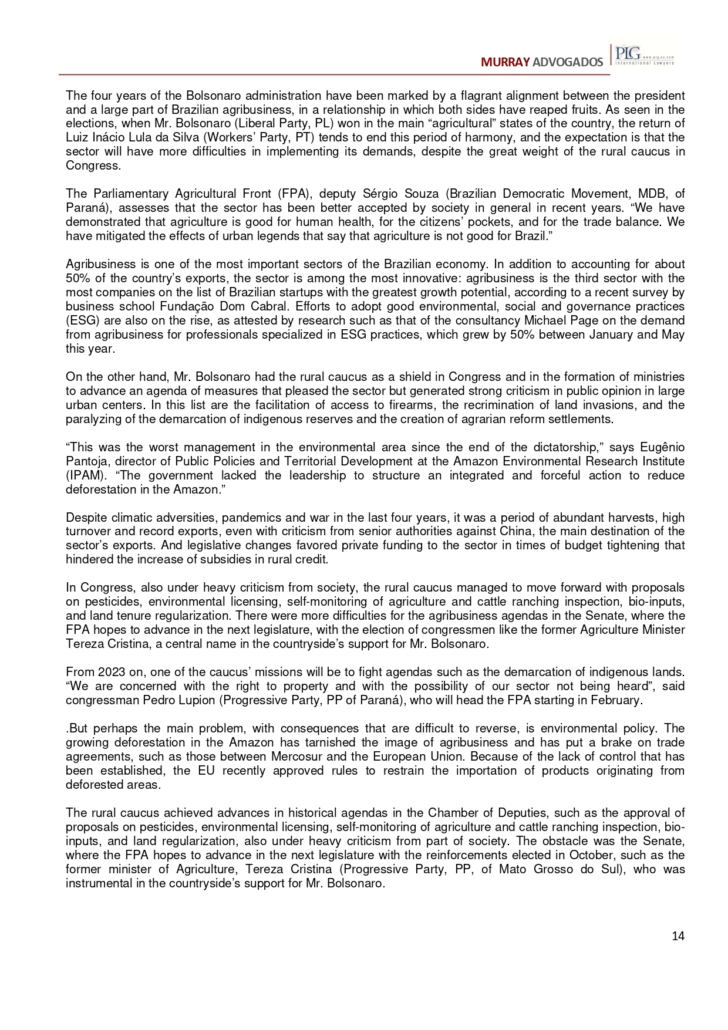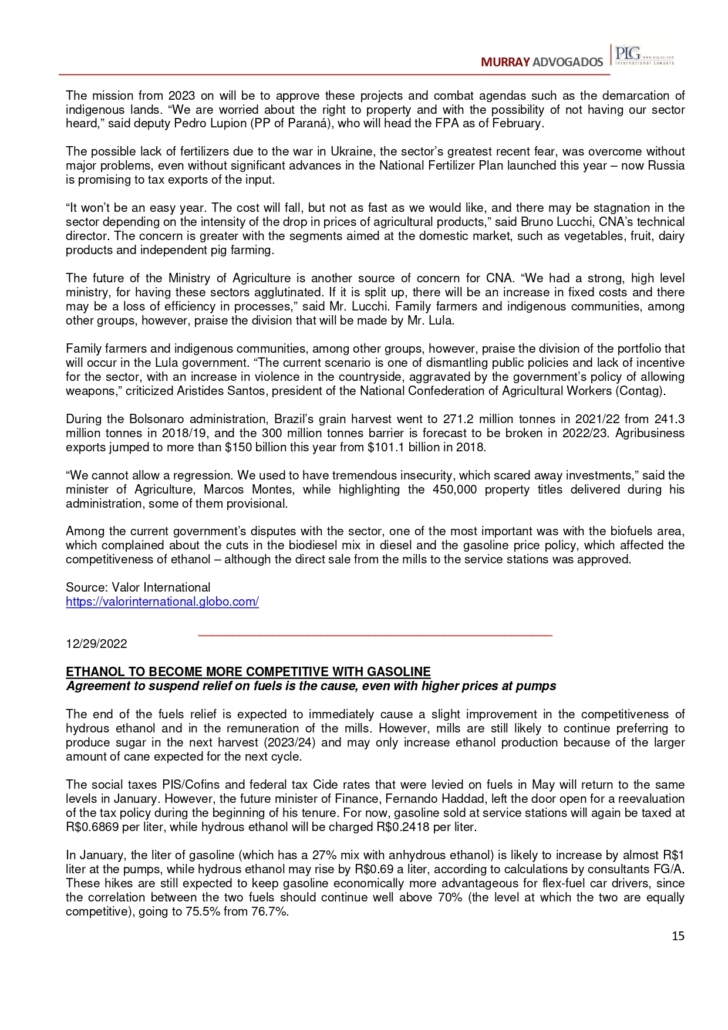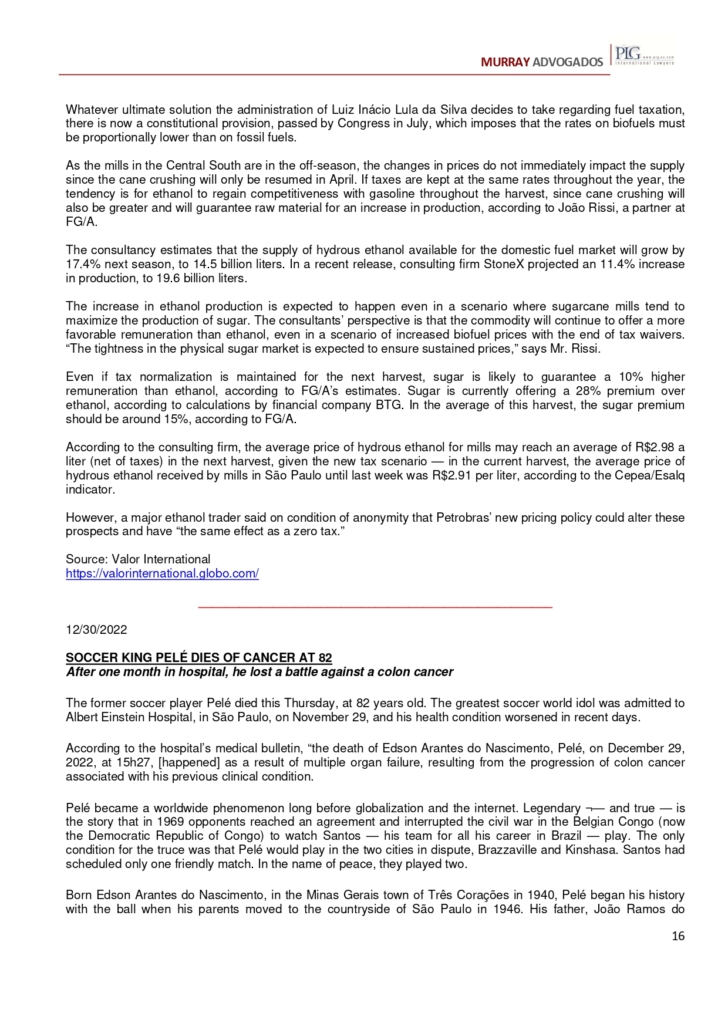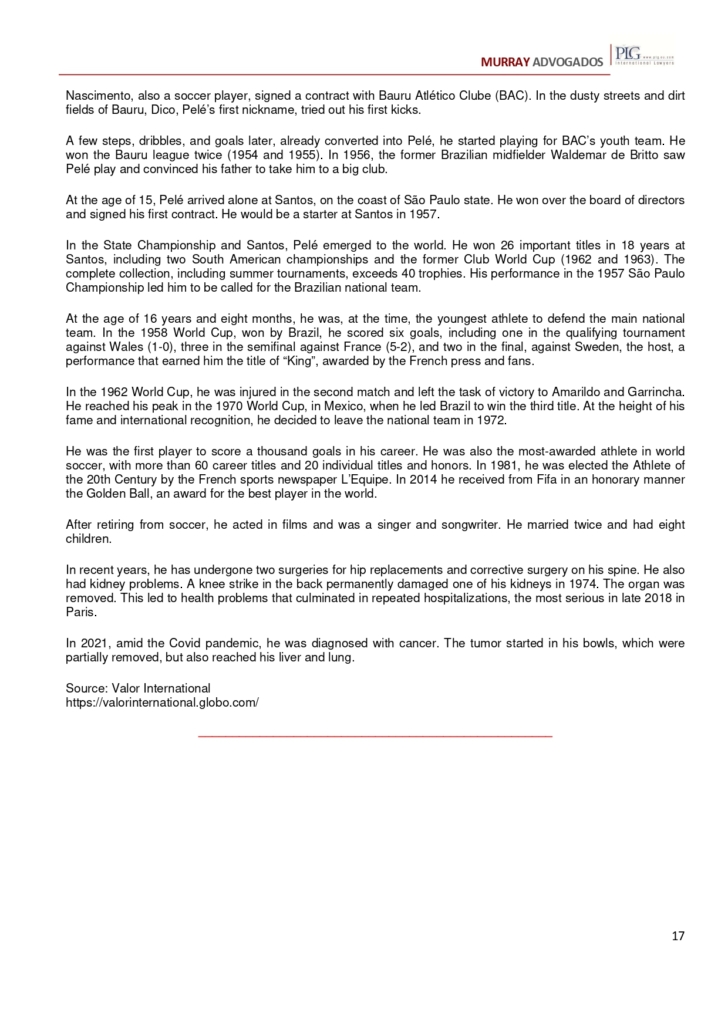After one month in hospital, he lost a battle against a colon cancer
12/30/2022
/i.s3.glbimg.com/v1/AUTH_37554604729d4b2f9f3eb9ad8a691345/internal_photos/bs/2022/m/E/N9vpx0Rpe2pGtdAnG1ww/0dbf69a53f1f41ae862abb16ed317ce4-1-c4ba04f42c814ecdb7b25eae452e7f0a.jpg)
Pelé — Foto: Eraldo Peres/AP
The former soccer player Pelé died this Thursday, at 82 years old. The greatest soccer world idol was admitted to Albert Einstein Hospital, in São Paulo, on November 29, and his health condition worsened in recent days.
According to the hospital’s medical bulletin, “the death of Edson Arantes do Nascimento, Pelé, on December 29, 2022, at 15h27, [happened] as a result of multiple organ failure, resulting from the progression of colon cancer associated with his previous clinical condition.
Pelé became a worldwide phenomenon long before globalization and the internet. Legendary ¬— and true — is the story that in 1969 opponents reached an agreement and interrupted the civil war in the Belgian Congo (now the Democratic Republic of Congo) to watch Santos — his team for all his career in Brazil — play. The only condition for the truce was that Pelé would play in the two cities in dispute, Brazzaville and Kinshasa. Santos had scheduled only one friendly match. In the name of peace, they played two.
Born Edson Arantes do Nascimento, in the Minas Gerais town of Três Corações in 1940, Pelé began his history with the ball when his parents moved to the countryside of São Paulo in 1946. His father, João Ramos do Nascimento, also a soccer player, signed a contract with Bauru Atlético Clube (BAC). In the dusty streets and dirt fields of Bauru, Dico, Pelé’s first nickname, tried out his first kicks.
A few steps, dribbles, and goals later, already converted into Pelé, he started playing for BAC’s youth team. He won the Bauru league twice (1954 and 1955). In 1956, the former Brazilian midfielder Waldemar de Britto saw Pelé play and convinced his father to take him to a big club.
At the age of 15, Pelé arrived alone at Santos, on the coast of São Paulo state. He won over the board of directors and signed his first contract. He would be a starter at Santos in 1957.
In the State Championship and Santos, Pelé emerged to the world. He won 26 important titles in 18 years at Santos, including two South American championships and the former Club World Cup (1962 and 1963). The complete collection, including summer tournaments, exceeds 40 trophies. His performance in the 1957 São Paulo Championship led him to be called for the Brazilian national team.
At the age of 16 years and eight months, he was, at the time, the youngest athlete to defend the main national team. In the 1958 World Cup, won by Brazil, he scored six goals, including one in the qualifying tournament against Wales (1-0), three in the semifinal against France (5-2), and two in the final, against Sweden, the host, a performance that earned him the title of “King”, awarded by the French press and fans.
In the 1962 World Cup, he was injured in the second match and left the task of victory to Amarildo and Garrincha. He reached his peak in the 1970 World Cup, in Mexico, when he led Brazil to win the third title. At the height of his fame and international recognition, he decided to leave the national team in 1972.
He was the first player to score a thousand goals in his career. He was also the most-awarded athlete in world soccer, with more than 60 career titles and 20 individual titles and honors. In 1981, he was elected the Athlete of the 20th Century by the French sports newspaper L’Equipe. In 2014 he received from Fifa in an honorary manner the Golden Ball, an award for the best player in the world.
After retiring from soccer, he acted in films and was a singer and songwriter. He married twice and had eight children.
In recent years, he has undergone two surgeries for hip replacements and corrective surgery on his spine. He also had kidney problems. A knee strike in the back permanently damaged one of his kidneys in 1974. The organ was removed. This led to health problems that culminated in repeated hospitalizations, the most serious in late 2018 in Paris.
In 2021, amid the Covid pandemic, he was diagnosed with cancer. The tumor started in his bowls, which were partially removed, but also reached his liver and lung.
*By Valor — São Paulo
Source: Valor International
Projections for GDP growth in the year remain at the median of 0.7%, but a wave of revisions has already begun
12/30/2022
/i.s3.glbimg.com/v1/AUTH_37554604729d4b2f9f3eb9ad8a691345/internal_photos/bs/2022/S/A/TeTJJQSq2b0582tDPtHQ/30bra-100-pib-a6-img01.jpg)
Armando Castelar Pinheiro — Foto: Ana Paula Paiva/Valor
While it is making its way in Congress, the so-called Proposal to Amend the Constitution (PEC) for the Transition and the expectations surrounding President-elect Luiz Inácio Lula da Silva’s government team has triggered a sharp worsening of the fiscal outlook this year-end.
Economists started to forecast higher inflation and abandoned the prospect of a reduction in the key interest rate in mid-2023 — the baseline scenario now is that interest rates will only be lowered at the end of the year or even later. Although the projections for the GDP next year have undergone few revisions so far, analysts are still debating the effects on the economy of the promised spending expansion of the new administration.
The median of the estimates of 114 financial institutions and consulting firms consulted by Valor for the GDP in 2023 is still at 0.7%, the same level as the last survey, at the end of November. In this period, at least 20 institutions lowered their projections, reflecting greater concern with the fiscal issue and the prospect that the Selic rate will take longer to fall again.
Another 22 revised their estimates upward. In this case, there was a contribution from the update of the GDP calculation for 2020 and 2021 by the Brazilian Institute of Geography and Statistics (IBGE). The updated values implied a carry over — that is, assuming a zero annual variation rate — for the 2022 and 2023 projections. The median of the projections for growth this year went to 3.0% from 2.8%.
At Claritas, the projection for 2023 was recently lowered to 0.6% from 1.0%. “We could see that Brazil would already experience a cyclical slowdown in growth because of two vectors: the lagged effect of monetary policy, which is possible to see in the figures for credit concession and default, and also because of the global scenario, with [the prospect of] recession in the United States, Europe, and the United Kingdom next year,” says Claritas’ chief economist, Marcela Rocha. “Brazil is a closed economy, but that generates lower export growth in an environment of tighter financial conditions.”
Against this picture, argues Ms. Rocha, there was only the prospect of a record agricultural harvest — with a growth of 14.6% according to projections by the National Supply Company (Conab), or 9.6%, according to the statistics agency IBGE — as well as some recovery in China, which is abandoning the zero Covid policy. But the scenario has ended up getting worse since the elections.
“The size of the Transition PEC spooked, and the market took away the Selic cuts that were planned for next year. Besides hitting the financial conditions, this has also generated an economic cost, which is the worsening of expectations and the increase in uncertainty,” he says. Claritas, however, still sees room for cuts in the key interest rate as of the third quarter.
The new government’s promise to boost public investments in the first year is seen with some skepticism. “It is necessary to see if there is enough time to spend next year. To make investment viable takes time, you need a plan,” says Ms. Rocha. “In any case, I believe that the balance would still be negative. Given the deceleration already contracted so far, this impulse given by the government may be more than offset by the increase in uncertainty.”
According to Cosmo Donato, an economist at LCA Consultores, 2023 will not have any major sector-boosting activity, but farming and cattle raising can make a positive contribution. “Growth drivers, such as industry and services, will lose strength next year. Our vision remains positive for the agriculture and cattle-raising sector, which fell by 0.6% this year and may grow by 3.1% next year,” he says, based on the prospection of harvest indicators and economic activity in China, one of the main destinations of Brazilian agricultural exports.
“But there is the distrust around the fiscal issue, which may imply a cycle of high Selic for a longer time, which weighs on the activity as well. It will be a very challenging year, without much positive news and having to be careful not to get more negative,” he continues.
“There is a lot of uncertainty in 2023. What will happen with this fiscal package is not trivial,” he says. “Next year we will still have high-interest rates holding back credit, construction that helped this year losing steam, and more indebted families,” says Armando Castelar, coordinator of the applied economics area at the Brazilian Institute of Economics of Fundação Getulio Vargas (Ibre-FGV).
The expectation is for less momentum from domestic demand and a less likely interest rate reduction scenario: “2023 will be more difficult than 2022. In part, because we are working close to the capacity limit. And the Central Bank is raising interest rates to slow the economy and control inflation. The complicating factor is expansionary fiscal policy,” says Castelar. “On one hand, you step on the accelerator. On the other, on the brakes. And one thing will get in the way of the other.”
“As the Monetary Policy Committee (Copom) has reinforced, when you have a very dynamic economy, fiscal pressures spill over into inflation, and monetary policy needs to respond to that,” says chief economist Cecília Machado. “In the short term, there may be some mismatch between the effects of these policies, so that the fiscal policy can give some more support to the economy. However, I believe that the monetary one will balance this game.”
Despite this, Ms. Machado sees upside risk to the projection, should the prospects for the agricultural harvest come true. “Agriculture is the big driver, but it also has spillover effects for other sectors, such as equipment and services. Incorporating this, it is possible to reach 1.6% [of growth next year],” she says.
(Contributed to this story Anaïs Fernandes and Marta Watanabe)
*By Marcelo Osakabe, Marsílea Gombata — São Paulo
Source: Valor International
Agreement to suspend relief on fuels is the cause, even with higher prices at pumps
12/29/2022

The end of the fuels relief is expected to immediately cause a slight improvement in the competitiveness of hydrous ethanol and in the remuneration of the mills. However, mills are still likely to continue preferring to produce sugar in the next harvest (2023/24) and may only increase ethanol production because of the larger amount of cane expected for the next cycle.
The social taxes PIS/Cofins and federal tax Cide rates that were levied on fuels in May will return to the same levels in January. However, the future minister of Finance, Fernando Haddad, left the door open for a reevaluation of the tax policy during the beginning of his tenure. For now, gasoline sold at service stations will again be taxed at R$0.6869 per liter, while hydrous ethanol will be charged R$0.2418 per liter.
In January, the liter of gasoline (which has a 27% mix with anhydrous ethanol) is likely to increase by almost R$1 liter at the pumps, while hydrous ethanol may rise by R$0.69 a liter, according to calculations by consultants FG/A. These hikes are still expected to keep gasoline economically more advantageous for flex-fuel car drivers, since the correlation between the two fuels should continue well above 70% (the level at which the two are equally competitive), going to 75.5% from 76.7%.
Whatever ultimate solution the administration of Luiz Inácio Lula da Silva decides to take regarding fuel taxation, there is now a constitutional provision, passed by Congress in July, which imposes that the rates on biofuels must be proportionally lower than on fossil fuels.
As the mills in the Central South are in the off-season, the changes in prices do not immediately impact the supply since the cane crushing will only be resumed in April. If taxes are kept at the same rates throughout the year, the tendency is for ethanol to regain competitiveness with gasoline throughout the harvest, since cane crushing will also be greater and will guarantee raw material for an increase in production, according to João Rissi, a partner at FG/A.
The consultancy estimates that the supply of hydrous ethanol available for the domestic fuel market will grow by 17.4% next season, to 14.5 billion liters. In a recent release, consulting firm StoneX projected an 11.4% increase in production, to 19.6 billion liters.
The increase in ethanol production is expected to happen even in a scenario where sugarcane mills tend to maximize the production of sugar. The consultants’ perspective is that the commodity will continue to offer a more favorable remuneration than ethanol, even in a scenario of increased biofuel prices with the end of tax waivers. “The tightness in the physical sugar market is expected to ensure sustained prices,” says Mr. Rissi.
Even if tax normalization is maintained for the next harvest, sugar is likely to guarantee a 10% higher remuneration than ethanol, according to FG/A’s estimates. Sugar is currently offering a 28% premium over ethanol, according to calculations by financial company BTG. In the average of this harvest, the sugar premium should be around 15%, according to FG/A.
According to the consulting firm, the average price of hydrous ethanol for mills may reach an average of R$2.98 a liter (net of taxes) in the next harvest, given the new tax scenario — in the current harvest, the average price of hydrous ethanol received by mills in São Paulo until last week was R$2.91 per liter, according to the Cepea/Esalq indicator.
However, a major ethanol trader said on condition of anonymity that Petrobras’ new pricing policy could alter these prospects and have “the same effect as a zero tax.”
*By Camila Souza Ramos — São Paulo
Source: Valor International
End of relief is expected to return almost R$55bn to federal government next year
12/29/2022
/i.s3.glbimg.com/v1/AUTH_37554604729d4b2f9f3eb9ad8a691345/internal_photos/bs/2022/A/J/tINxXdR3agEbCs0iycFw/29bra-200-fiscal-a2-img01.jpg)
Raul Velloso — Foto: Leonardo Rodrigues/Valor
The end of federal taxes relief on fuel as of January leaves the central government deficit (National Treasury, Social Security, and the Central Bank) in 2023 closer to 1% than to 1.5% of GDP, economists point out but does not change the worrisome trajectory of the debt and the need to review spending.
The future Finance minister of Luiz Inácio Lula da Silva, Fernando Haddad, asked the current minister, Paulo Guedes, to let the social taxes PIS/Cofins and federal tax Cide relief on gasoline, ethanol, and diesel, as ordered by president Jair Bolsonaro in the election race, expire on December 31.
“Bolsonaro made a political decision that goes against economic logic,” says Raul Velloso, a public finance specialist. The fiscal effort to keep fuel prices artificially low, he says, is incompatible with the need to balance the Budget, even without a spending cap, of which Mr. Velloso is critical.
The end of the relief is expected to return almost R$55 billion to the federal government next year, economists estimate. “There is no way at this point to give up a high value like this unless the elected government gives up its social welfare policy,” says Mr. Velloso.
Many companies already include these additional revenues in their projections. Terra Investimentos expects a R$90 billion deficit for the central government in 2023. The calculation considers, on the expenditure side, an increase in expenses with the Proposal of Amendment to the Constitution (PEC) of Transition and other fiscal expansion initiatives. On the revenue side, it considers R$53 billion from the relief of federal taxes on fuel, in addition to about R$30 billion from other tax reductions that, in Terra’s view, may happen, for example, in taxes on industrialized products and imports.
Still, the expected deficit is large, says Homero Guizzo, economist at Terra, estimating that the gross debt may rise to 82.3% in 2023 from 76.5% of GDP in 2022. “Certainly, the numbers are ugly, just not as ugly as the gloomiest estimates.”
XP Investimentos also expected a R$106.9 billion (1% of GDP) deficit for the central government in 2023, with the end of relief of taxes. Without it, the deficit would go to R$161 billion (1.5% of GDP).
For the consolidated public sector (central government, states, municipalities, and state-owned companies), Ryo Asset’s deficit projection of 1.5% of GDP did not fully account for the fuel tax reductions. Now, it may be close to 1% of GDP. The BRCG consultancy foresees a deficit in the consolidated public sector of around 0.5% of GDP in 2023, already incorporating not only the return of federal taxes but also a third of the equivalent ICMS taxation, says Livio Ribeiro, partner at BRCG and associate researcher at the Brazilian Institute of Economics (FGV Ibre).
*By Anaïs Fernandes, Rodrigo Carro — São Paulo, Rio de Janeiro
Source: Valor International
Shielding increased and improved results, but did not prevent political interference
12/27/2022
/i.s3.glbimg.com/v1/AUTH_37554604729d4b2f9f3eb9ad8a691345/internal_photos/bs/2021/f/b/Fn47PASZ2Gsn15TqS2cA/correio-ffraz-abr-18091923263.jpg)
Brazil’s postal service will close this year with R$3 billion in cash — Foto: Valor
Correios, Brazil’s postal service, will close this year with R$3 billion in cash, not counting debts, six times more than at the end of 2019. Oil giant Petrobras made almost the same profit in the nine months of this year alone as in the previous four years combined. Banco do Brasil paid R$11 billion in taxes and R$21.8 billion to its shareholders.
These are some of the numbers in the survey conducted by Valor Data with six of the largest federal state-owned companies – Petrobras, Banco do Brasil (BB), Caixa Econômica Federal, Brazilian National Bank of Social Development (BNDES), Correios and Eletrobras, the latter privatized in June. The data show the result of a financial clean-up process of these companies after a period marked by the misappropriation of public resources.
Together, these companies earned R$213.6 billion from January to September of this year – R$145 billion from Petrobras alone. Anyway, all of them improved in the period and the number represents a leap compared to the R$69.2 billion that the set profited in 2018, still under the government of Michel Temer (Brazilian Democratic Movement, MDB).
Much of these results, which reversed years of losses for shareholders and citizens, can be credited to a law, passed in 2016 in the wake of the corruption scandal involving several state-owned and private companies.
Not even these factors, however, have prevented the political interference of President Jair Bolsonaro (Liberal Party, PL) in state-owned companies. The successive interference in Petrobras amid high fuel prices and the use of funds from Caixa in the electoral campaign machine are the most notorious cases.
Now, on the eve of the new Lula administration, the law of state-owned companies itself is in jeopardy. In the middle of December, the Chamber of Deputies passed in a blink of an eye changes in the law to allow Aloizio Mercadante to be appointed by the elected Workers’ Party administration to run the Brazilian Development Bank (BNDES). It was even considered that the text would be passed in the Senate the following day, but the idea ended up not succeeding after the strong reaction to the maneuver.
In addition to reducing from three years to 30 days the quarantine of nominees who have occupied party decision-making structures or participated in electoral campaigns to leading positions of state-owned companies, the document passed in the Chamber provides for an increase in the advertising spending limit to 2% from 0.5% of gross revenue. In the case of Petrobras, for example, this means an increase of R$8.5 billion.
These changes put at risk, according to analysts, lawyers and governance experts consulted by Valor, the advances achieved in recent years. The share price of Petrobras, the largest Brazilian company and the hardest hit during the years of mismanagement, fell 10% the next day and has accumulated a loss of R$100 billion in market capitalization since November.
The change in the law of state-owned companies is “alarming” and has questionable outlines by the manner and speed with which it was approved, according to a manifesto signed by the Association of Capital Markets Investors (AMEC) and the Brazilian Institute of Corporate Governance (IBGC).
Banks and brokerage firms had already been correcting their target prices for state-owned companies, especially Petrobras, foreseeing a reduction in dividends and more expenses outside what is currently considered the company’s main business: deep-water exploration. The change in the law was another blow to the valuation of the company, whose investment thesis, according to the Citi report, is anchored in its bylaws, in the Brazilian Corporate Law, and in the law of state-owned companies.
Since the second round of the elections, out of 15 banks and brokerage companies monitored by Valor, seven have downgraded their recommendation for Petrobras’ shares, mostly from buy to neutral, and nine have cut their target prices.
With all the turbulence and interference attempts during the Bolsonaro administration, mainly motivated by fuel prices, the professionalization of Petrobras’ management has brought record yields for its shareholders and for society, in the form of taxes. Compared to 2018, sales revenue is 50% higher, profit has grown 300% and debt shows a downward trend. The skyrocketing oil prices found the company adjusted, which allowed unprecedented levels of profitability while internal controls prevented deviations in governance.
There has been criticism of the record distribution of dividends and the allocation of resources, which could, hypothetically, have financed more investments. What the current transparency guarantees is that these criticisms are based on reliable figures, which is a much better situation than the one in which funds leaked off the financial statement.
The financial yields were accompanied by huge tax expenditures. At the end of 2021, Petrobras paid R$203 billion in taxes, fees and contributions, more than double compared to the previous year, the year of the pandemic, and 11% more than in 2018.
A point in common among the companies in the survey, besides the general improvement of indicators – and part of the explanation for this advance – is the process of downsizing the workforce, mainly through the use of buyout plans.
Eletrobras, which went through a restructuring process for privatization, which occurred in June, and Petrobras cut about 30% of their workforce between 2018 and 2021. At Correios, the cut totaled 15% of the workforce, and at Banco do Brasil, 13%. The exception was Caixa, which was practically stable: there is a slight decrease in the four years, with an increase of 5% in 2022 until September.
This movement is not restricted to this group of state-owned companies most exposed to public scrutiny. The survey conducted by the Secretariat of Coordination and Governance of State-Owned Enterprises (Sest), linked to the Special Secretariat of Privatization, Disinvestment and Markets of the Ministry of Economy, with 47 companies under the direct control of the federal government, shows a reduction of 4.4%, or 20,550 employees, in 2021, compared to the previous year.
The consolidated performance of this group was also largely positive, with the significant influence of the largest companies, such as Petrobras and Banco do Brasil. Together, the 47 companies earned R$187.7 billion last year, three times more than in 2020, which resulted in a payment of dividends to shareholders of R$101 billion, 535% higher. The companies’ net equity grew 18%, to R$903.7 billion.
The overhaul of the state-owned companies also fits in with the Bolsonaro administration’s policy of reducing the presence of the government in the economy, which had its most successful example in the dilution of Eletrobras’ control. The privatization of Petrobras was already seen as a more difficult undertaking and is now definitively buried. Correios was a more viable option in the privatization queue but will most likely be shelved by the new government. This week, the president-elect, Luiz Inácio Lula da Silva, said that there will be no more privatizations in the country.
In the long list of hijackings of state-owned companies by politicians, Correios has a particular symbolism. A leaked video of a company employee in 2005 started the crisis with the so-called “Mensalão”, the scheme of payments to politicians that almost put an end to Mr. Lula’s first term in office. Later, the Federal Police’s anti-corruption task force Car Wash would reveal even bigger schemes in large listed companies such as Petrobras and Eletrobras.
The final report of the Joint Parliamentary Inquiry Commission installed in 2005 to investigate the Correios’ scandal revealed the use of R$2 billion in bribes and called for the indictment of more than 100 people. In that year, the company was healthy, with a net worth of R$2.26 billion. Ten years later, when the state-owned companies law was passed, it was practically bankrupt, with R$3.42 billion in accumulated losses.
*By Nelson Niero — São Paulo
Source: Valor International
Bolsonaro administration was marked by good relations and joint victories, some criticized by public opinion
12/27/2022
The four years of the Bolsonaro administration have been marked by a flagrant alignment between the president and a large part of Brazilian agribusiness, in a relationship in which both sides have reaped fruits. As seen in the elections, when Mr. Bolsonaro (Liberal Party, PL) won in the main “agricultural” states of the country, the return of Luiz Inácio Lula da Silva (Workers’ Party, PT) tends to end this period of harmony, and the expectation is that the sector will have more difficulties in implementing its demands, despite the great weight of the rural caucus in Congress.
The Parliamentary Agricultural Front (FPA), deputy Sérgio Souza (Brazilian Democratic Movement, MDB, of Paraná), assesses that the sector has been better accepted by society in general in recent years. “We have demonstrated that agriculture is good for human health, for the citizens’ pockets, and for the trade balance. We have mitigated the effects of urban legends that say that agriculture is not good for Brazil.”
Agribusiness is one of the most important sectors of the Brazilian economy. In addition to accounting for about 50% of the country’s exports, the sector is among the most innovative: agribusiness is the third sector with the most companies on the list of Brazilian startups with the greatest growth potential, according to a recent survey by business school Fundação Dom Cabral. Efforts to adopt good environmental, social and governance practices (ESG) are also on the rise, as attested by research such as that of the consultancy Michael Page on the demand from agribusiness for professionals specialized in ESG practices, which grew by 50% between January and May this year.
On the other hand, Mr. Bolsonaro had the rural caucus as a shield in Congress and in the formation of ministries to advance an agenda of measures that pleased the sector but generated strong criticism in public opinion in large urban centers. In this list are the facilitation of access to firearms, the recrimination of land invasions, and the paralyzing of the demarcation of indigenous reserves and the creation of agrarian reform settlements.
“This was the worst management in the environmental area since the end of the dictatorship,” says Eugênio Pantoja, director of Public Policies and Territorial Development at the Amazon Environmental Research Institute (IPAM). “The government lacked the leadership to structure an integrated and forceful action to reduce deforestation in the Amazon.”
Despite climatic adversities, pandemics and war in the last four years, it was a period of abundant harvests, high turnover and record exports, even with criticism from senior authorities against China, the main destination of the sector’s exports. And legislative changes favored private funding to the sector in times of budget tightening that hindered the increase of subsidies in rural credit.
/i.s3.glbimg.com/v1/AUTH_37554604729d4b2f9f3eb9ad8a691345/internal_photos/bs/2022/X/q/lHGLEmSWAbVCm22hYAiQ/27agr-100-rural-b6-img01.jpg)
Tereza Cristina — Foto: Valor
In Congress, also under heavy criticism from society, the rural caucus managed to move forward with proposals on pesticides, environmental licensing, self-monitoring of agriculture and cattle ranching inspection, bio-inputs, and land tenure regularization. There were more difficulties for the agribusiness agendas in the Senate, where the FPA hopes to advance in the next legislature, with the election of congressmen like the former Agriculture Minister Tereza Cristina, a central name in the countryside’s support for Mr. Bolsonaro.
From 2023 on, one of the caucus’ missions will be to fight agendas such as the demarcation of indigenous lands. “We are concerned with the right to property and with the possibility of our sector not being heard”, said congressman Pedro Lupion (Progressive Party, PP of Paraná), who will head the FPA starting in February.
.But perhaps the main problem, with consequences that are difficult to reverse, is environmental policy. The growing deforestation in the Amazon has tarnished the image of agribusiness and has put a brake on trade agreements, such as those between Mercosur and the European Union. Because of the lack of control that has been established, the EU recently approved rules to restrain the importation of products originating from deforested areas.
The rural caucus achieved advances in historical agendas in the Chamber of Deputies, such as the approval of proposals on pesticides, environmental licensing, self-monitoring of agriculture and cattle ranching inspection, bio-inputs, and land regularization, also under heavy criticism from part of society. The obstacle was the Senate, where the FPA hopes to advance in the next legislature with the reinforcements elected in October, such as the former minister of Agriculture, Tereza Cristina (Progressive Party, PP, of Mato Grosso do Sul), who was instrumental in the countryside’s support for Mr. Bolsonaro.
The mission from 2023 on will be to approve these projects and combat agendas such as the demarcation of indigenous lands. “We are worried about the right to property and with the possibility of not having our sector heard,” said deputy Pedro Lupion (PP of Paraná), who will head the FPA as of February.
The possible lack of fertilizers due to the war in Ukraine, the sector’s greatest recent fear, was overcome without major problems, even without significant advances in the National Fertilizer Plan launched this year – now Russia is promising to tax exports of the input.
“It won’t be an easy year. The cost will fall, but not as fast as we would like, and there may be stagnation in the sector depending on the intensity of the drop in prices of agricultural products,” said Bruno Lucchi, CNA’s technical director. The concern is greater with the segments aimed at the domestic market, such as vegetables, fruit, dairy products and independent pig farming.
The future of the Ministry of Agriculture is another source of concern for CNA. “We had a strong, high level ministry, for having these sectors agglutinated. If it is split up, there will be an increase in fixed costs and there may be a loss of efficiency in processes,” said Mr. Lucchi. Family farmers and indigenous communities, among other groups, however, praise the division that will be made by Mr. Lula.
Family farmers and indigenous communities, among other groups, however, praise the division of the portfolio that will occur in the Lula government. “The current scenario is one of dismantling public policies and lack of incentive for the sector, with an increase in violence in the countryside, aggravated by the government’s policy of allowing weapons,” criticized Aristides Santos, president of the National Confederation of Agricultural Workers (Contag).
During the Bolsonaro administration, Brazil’s grain harvest went to 271.2 million tonnes in 2021/22 from 241.3 million tonnes in 2018/19, and the 300 million tonnes barrier is forecast to be broken in 2022/23. Agribusiness exports jumped to more than $150 billion this year from $101.1 billion in 2018.
“We cannot allow a regression. We used to have tremendous insecurity, which scared away investments,” said the minister of Agriculture, Marcos Montes, while highlighting the 450,000 property titles delivered during his administration, some of them provisional.
Among the current government’s disputes with the sector, one of the most important was with the biofuels area, which complained about the cuts in the biodiesel mix in diesel and the gasoline price policy, which affected the competitiveness of ethanol – although the direct sale from the mills to the service stations was approved.
By Rafael Walendorff — Brasília
Source: Valor International
After nearly tripling in size in Brazil, company does not rule out new purchases
20/12/2022
/i.s3.glbimg.com/v1/AUTH_37554604729d4b2f9f3eb9ad8a691345/internal_photos/bs/2022/d/v/ZpZmCNRU2CjF2VzbQW7g/300622exevalor074.jpg)
Andre Dias — Foto: Silvia Zamboni/ Valor
After nearly tripling in size in Brazil by 2022 and reaching revenues of R$8 billion, Nutrien has elected as goals for the country in 2023 to ensure the proper integration of assets purchased this year, foster the organic expansion of the current distribution chain of agricultural inputs, open new stores and continue to keep an eye out for acquisition opportunities.
“After a year like this, in which our growth was very accelerated, we had to rebalance priorities. We will consolidate our platform, but without stopping advancing,” said André Dias, president of the Canadian multinational in Latin America, to Valor. This advance happened mainly in the area of retail inputs, although the company continues to invest in the expansion of its fertilizer blending business in Brazil.
The investments in the acquisitions of three new distribution networks in the country totaled R$500 million this year. With Marca Agro and its seven stores, Nutrien improved its position in Minas Gerais and its access to coffee growers; with Casa do Adubo and its 39 points of sale in 11 states, it added annual sales of around R$2.5 billion and consolidated the local sourcing of the operation; and with the purchase of Safra Rica, which still depends on the approval of Cade, the antitrust regulator, it incorporated nine more units in São Paulo and Minas Gerais, with an eye on sugar cane and orange producers.
Safra Rica was Nutrien’s seventh acquisition in this segment since the company entered the Brazilian market in 2020. Now, the company already has 120 commercial units – the retail chains in Argentina, Chile, and Uruguay combined reached 188 units in Latin America, a region where the company’s revenue will reach R$12 billion in 2022. Of the R$4 billion forecasts for the other three countries that complete Latin America’s revenues, Argentina accounts for approximately three quarters.
Of this year’s purchases, the one that is demanding more effort in the integration process is Casa do Adubo. Besides the large number of stores and states of operation, the business model is different, with a focus on sales to small producers and small distributors (via the subsidiary Casal). “And that is why it attracted us. Certainly, this process will serve to guide our next acquisitions,” said Mr. Dias.
Despite the strong growth reported in 2022, when the number of customers exceeded 110,000, it was a difficult year for sales of agricultural inputs in the country, especially because of the risk — which was not confirmed — of shortage of fertilizers in Brazil after the Russian invasion in Ukraine and the sharp rise in nutrient prices in the domestic market derived from this risk. In May, fertilizers reached a peak of more than $1 per tonne, compared to about $600 today. In 2023, the scenario may improve.
At the same time, Nutrien plans for next year the inauguration of its fifth fertilizer blender in the country, in Alfenas (Minas Gerais). The company has four units of this kind, located in Itapetininga (São Paulo), Araxá (Minas Gerais), Cristalina (Goiás), and Morrinhos (Goiás). The blenders receive the raw materials and formulate the fertilizers used by farmers in their plantations.
*By Fernando Lopes — São Paulo
Source: Valor International
Package includes auctions, renewals, and an authorization regime
12/20/2022

In the last four years, the railroad sector has seen a wave of new projects. At least R$61 billion in investments were contracted (considering the values at the time of contracting), including auctions of new stretches, early renewal of concessions, and a new private railroad.
The impact of most of these projects is still to come since they are long-term enterprises. However, specialists assess that a real change in the cargo transportation matrix in Brazil, still very concentrated on highways, is still far off. A greater transformation will depend on attracting more private investment and resuming the role of the government in the growth of the network.
In 2022, railroads should be responsible for 19% of the country’s cargo movement – without much variation concerning the level observed since 2004, according to data from consultancy Ilos. Highways will continue to represent about 63% of the transportation matrix.
“We have made progress, but only in specific points. It will take time for us to put a change into practice because at the same time that investments are made, the country continues to increase its production, its harvest. The new projects are extremely necessary, but, in the short term, there will be no change in the participation of the modals,” says Maria Fernanda Hijjar, executive partner at Ilos.
“The truth is that we have had no evolution [in recent years]. On the contrary, we are losing rails, because of the existing 30,000 km, only 12,000 km are operational. We have 18,000 km of abandoned or underused railroads and many of them are even being returned to the federal government,” says Marcus Quintella, head of FGV Transportes, the Fundação Getulio Vargas’ Center for Transport Studies.
He also points out that the contracted investments will bring some progress. “The early renewals will guarantee, at least, the improvements in the railroad network that is already in operation. In addition, the inclusion of cross-subsidies, with the allocation of part of the investments to new railroads, will have a positive effect,” he says.
In recent years, the federal government finally managed to get the plan to renew major railroad concessions off the drawing board, as a way to bring forward new investments – a plan started in 2015, but which was stuck for years due to resistance from the public spending watchdog TCU.
The pioneer was Rumo’s Malha Paulista, in May 2020, which included works estimated at the time at R$6.1 billion. Since then, Vale has also managed to renew the concessions of two railroads, in exchange for some R$24.7 billion in investments. Part of the funds has been allocated to other projects: the construction of the Ferrovia de Integração Centro Oeste (Fico), currently being built by Vale, and the purchase of equipment for the Ferrovia de Integração Oeste Leste (Fiol).
MRS also had approval for its addendum, with a commitment of about R$9.7 billion in new work in the system.
In addition, two auctions of new concessions were held. In the first of them, in 2019, Rumo won the central stretch of the Norte-Sul highway, which began operating in March 2021.
The second auction, of Fiol’s initial stretch, was won by Bamin (Bahia Mineração) in April 2021. The company expects to start work in the first quarter of 2023 to complete the railroad (whose construction was started by the government). Until now, the group has been evaluating the projects and carrying out due diligence on the site, as well as starting services for the remediation of environmental liabilities.
This newly contracted investment wave, however, is already encountering problems. The operators are asking the federal government to acknowledge the need for an economic and financial rebalancing of the contracts, due to the strong inflation of inputs observed as of the second half of 2021 – when a good part of the agreements was already signed.
“The increase in inputs is an effective problem, which has generated liabilities that have not been resolved. The prices have not yet been readjusted. The construction work is going to happen, but the government needs to signal that this abyss is going to be solved,” says Fernando Paes, head of ANTF (National Association of Railway Carriers).
Besides the auctions and renewals, another advance in the sector was the approval of the authorization regime, which brought the possibility of private companies building railways on their own, without participation or sharing of risks with the government.
In the market, the expectation for authorizations is positive, but much more modest than the exorbitant projections released by the federal government – in total, the requests filed could add up to R$258 billion, according to the Ministry of Infrastructure. The expectation is that, in practice, a small portion of those applications will get off the ground. Still, the model is seen as an important step.
“It is very difficult to predict which and how many projects will come to fruition. When we look at the experience of private port terminals, the rate of projects not coming to fruition is quite high, so it is something natural,” says Mr. Paes.
For him, the most viable projects will be the smaller ones, with easier and less costly implementation, and for which there is already a forecasted load. “It can also be a good way to solve stretches of existing railways that are unused or have low utilization,” he says.
Besides private investments, a general perception in the sector is that, in order to build new large railroads and generate development in regions of the country where demand is not yet given, the actions of the federal government will be indispensable.
“The private company is not going to build a groundbreaking railroad, that is the role of the government,” says Mr. Quintella, with FGV Transportes.
For him, there is no short-term perspective of the country returning to large public works, due to the fiscal crisis. However, he ponders that it is already possible – and necessary – to invest again in the elaboration of good projects and in planning for the country’s logistics, including beyond railroads. “It is important to think about intermodality. It is wrong to think of investing only in railroads,” he says.
Mr. Paes, with ANTF, also sees the need for the government to participate more actively. “Only authorizations or only cross-subsidies are not going to be enough. The federal government needs to assume a role as a protagonist of the railway network, whether in construction, financing, or via public-private partnerships (PPPs). We need to take that leap.”
Despite the challenges and costs, experts point to major benefits in promoting a better balance of the transportation system in Brazil. For logistics, this change would represent a multi-billion cost reduction, according to Ms. Hijjar, with Ilos.
A projection by the consultancy indicates that if the Brazilian matrix was similar to that of the U.S. – in which the railway modal represents 33% of the total; the pipeline, 19%; and waterways, 9% – the transportation costs, in 2021, would have been R$208.42 billion less. “Of course, it is only a theoretical exercise, but it already gives the dimension of the impact,” she says.
*By Taís Hirata — São Paulo
Source: Valor International

